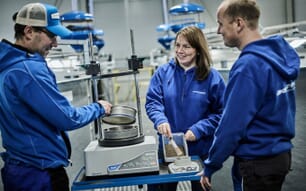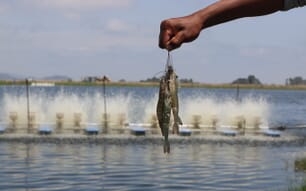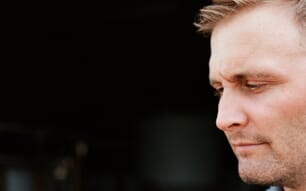Identity
Salmo salar Linnaeus, 1758 [Salmonidae]
FAO Names: En - Atlantic salmon, Fr - Saumon de l'Atlantique, Es - Salmón del Atlántico
Biological features
Body elongate, but becoming deeper with age, caudal peduncle slender, the fish easily grasped by it. Tip of upper jaw reaching to hind margin of eye, but not beyond; jaws in adult males become greatly hooked just before and during breeding. A staggered line of teeth on shaft of vomer, but none on head of vomer. Gillrakers 17-24. Dorsal finrays iii-iv + 9-12, and an adipose fin behind it; pelvic finray i-ii (7) 8-9, base below latter half of dorsal fin. Anal finrays iii-iv + 7-9 (10). Caudal fin fairly deeply forked. Scales small, 114-130 in lateral line, 11-15 obliquely from adipose fin to lateral line. Vertebrae 59-60. Colour back brown, or green/blue, flanks silvery, belly white; back and flanks above lateral line (rarely below it) with X-shaped black spots; in freshwater, flanks greenish or brown, mottled with red or orange and with large dark spots with lighter edges.
Profile
Historical background
Atlantic salmon culture began in the 19th century in the UK in freshwater as a means of stocking waters with parr in order to enhance wild returns for anglers. Sea cage culture was first used in the 1960s in Norway to raise Atlantic salmon to marketable size. The early successes in Norway prompted the development of salmon culture in Scotland, and latterly Ireland, the Faroe Islands, Canada, the North Eastern seaboard of the USA, Chile and Australia (Tasmania). Minor production also occurs in New Zealand, France and Spain. All of the major production areas lie within latitudes 40-70º in the Northern Hemisphere, and 40-50º in the Southern Hemisphere.
The early Norwegian success reflected the excellent deep sheltered sites available, favourable hydrographic conditions (stable temperatures and salinities), natural salmon strains that mature late, and heavy governmental support and investment. Scottish strains of salmon tend to mature early, reducing the value of fish as they reach marketable size, so Norwegian strains were introduced to reduce this problem. Generations of cross breeding have resulted in hybrid strains which are now the norm in most production areas.
Irish production has been limited by shallow sheltered water and local opposition. The economic value of salmon farming in the Faroes has now overtaken that of fishing. North American salmon culture mainly features Atlantic salmon on both coasts. Chile has become a major producer since Atlantic salmon were introduced from Norway and Scotland in the early 1980s. Chile benefits from low production costs and easy access to fish meal for salmon feed production, which allows it to compete with Northern hemisphere producers for lucrative markets.
Salmon farming reached Tasmania in 1984, with the importation of eggs from Nova Scotia, Canada. The area has favourable sea temperatures and its relative isolation from other wild and cultured Atlantic salmon avoids some of the major infectious disease problems. Lack of suitable sites will most likely limit the expansion of the industry there.
Rapid increases in production have led to falling prices, which in turn have put increasing pressures on producers to limit costs. Significant future expansion of the industry may rely on the development of offshore sites, since most of the available suitable inshore sites are already in use, and because of increasing antagonism towards, and regulation over, further expansion in sheltered areas.
The vast majority of Atlantic salmon currently in production is hybrid stock, derived originally from native crossed with Norwegian stock. Some family breeding programmes are now in place, in order to attempt to identify family lines with increased production potential and/or disease resistance. The use of sex or genetic manipulation in Atlantic salmon is not widely used in cultured fish.
Main producer countries

Habitat and biology
Wild Atlantic salmon are found in the North Atlantic on both European (Portugal to Russia) and North American (Cape Cod to Labrador) sides. They also occur around North Atlantic islands (e.g. UK, Iceland, Greenland). They spend up to 4 years in deep-sea feeding grounds feeding on pelagic species such as herring, sprat and squid. At the onset of maturation, fish cease feeding, and return to their rivers of origin to spawn (October-January). Most fish die following spawning, although some may return to sea as "kelts".
Eggs are released and fertilized in "redds" in upstream gravel beds, where they eye after approximately 250 degree days and hatch after a further 250, in spring. The hatched alevins live off their yolk sacs for approximately 300 degree days, hiding amongst the gravel and rocks in the streams, until they begin to feed as fry.
Juvenile fish remain in freshwater, feeding on insect larvae and small fish, through fry and parr stages for 2-5 years, until they undergo seawater adaptation and become "smolts" (smoltification, a process triggered by changing photoperiod) and migrate downriver to sea (normally March-June), where they head for deep water feeding grounds to grow and mature. Wild smolts are normally around 20-30 g; fish in seawater can reach large sizes but are typically 8-13 kg when they start their spawning migration.
Production
Production cycle
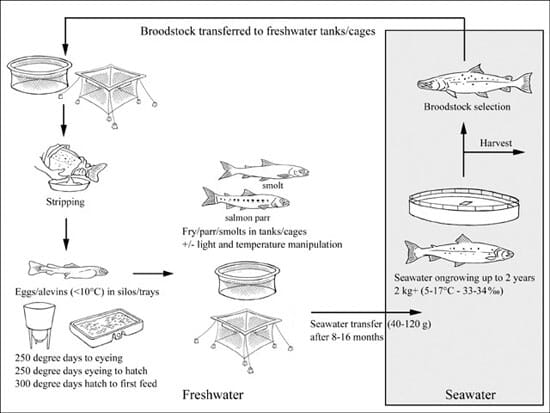
Production systems
Seed supply
Freshwater hatchery
Broodstock are selected from seasite production stocks, and normally moved into freshwater tanks or cages in autumn approximately 2 months prior to stripping.
Eggs are stripped dry, fertilised with milt, then water hardened and disinfected, prior to laying them down in trays or silo systems. They are "shocked" following eyeing by pouring from one container into another to remove unfertilised eggs.
Hatching takes place in hatchery trays or following transfer to tanks. Alevins are provided with a matting or stony "substrate" to mimic the natural gravel "redd", and usually maintained in darkened conditions. Incubation of eggs and alevins normally takes place in water at <10 °C. Following yolk sac absorption, alevins will "swim up" in the water column, indicating readiness to first feed. First feeding, using inert feeds, is normally carried out following transfer of late alevins into tanks, although feed may initially be offered in hatchery trays. "Feeding fry" can be grown on in tanks, either using flow-through or various recirculation systems, or subsequently in lake cage systems, through parr stages to smolt.
Nursery
Fish can either be maintained on ambient temperature and light regimes to produce "S1" smolts in the spring of the year following hatch, or light and temperature regimes can be manipulated artificially to induce early smoltification. Production densities vary depending on the system; very intensive systems may maintain fish at densities as high as 50 kg/m3 or higher.
Ongrowing techniques
In seawater
Smolted fish at 40-120 g are transferred to seasites following the determination that fish have smolted and are adapted for seawater survival, using combinations of experience and seawater tolerance testing techniques. Transfers are usually carried out in specialized transport tanks by any combination of road, helicopters, and by sea in specialized "wellboats" (boats with large wells circulating seawater). Ongrowing at sea normally takes place in cages consisting of large nets suspended from various floating "walkway" systems anchored to the seabed, although some production has been carried out in pump-ashore seawater tank systems. Cages may be square or circular in design, and come in various sizes and systems. The larger sites may have cages as large as 24 m2 or 100 m in diameter, suspending nets that may reach depths of 15-18 m, enclosing water volumes of thousands of cubic metres. Several cages may be grouped together to form a seasite.
Seasites are selected on their suitability with regard to water temperature, salinity, flow and exchange rates, proximity to other farms and/or wild fisheries, and in compliance with local licensing regulations. Atlantic salmon grow best in sites where water temperature extremes are in the range 6-16 °C, and salinities are close to oceanic levels (33-34 per cent). Water flows need to be sufficient to eliminate waste and to supply well oxygenated water (approximately 8 ppm). Maximum stocking densities of up to 20 kg/m3 are usual. Atlantic salmon are ongrown in seasites for up to 2 years with harvesting of fish from 2 kg upwards. Seasites normally contain a single generation of fish. Good practice is to fallow seasites for a period of 6 weeks or more prior to the introduction of a new generation of fish.
Feed supply
The bulk of salmon feeds are produced by three or four large companies. Fish meal and fish oil, derived largely from the huge industrial fisheries in South America, still form the basis of salmon diets, although increasing pressure on these sources have led to increased research into the substitution of fish products with vegetable protein and oil sources in recent times. Salmon grower diets contain high levels of fish oil, which is efficiently converted by the salmon, often at food conversion ratios of close to 1:1. Feeding methods and technology have also advanced in recent years. Many seafarms use computerized systems to drive automated feeding systems, with feedback mechanisms to detect when fish have finished feeding. This allows fish to be fed to satiation without overfeeding and consequent feed wastage.
In order to produce fish with the flesh colour demanded by the market, carotenoid pigments are added to the diet (at high cost to the farmer) during the seawater growing phase of the production cycle.
Harvesting techniques
Methods of harvesting vary but fish are generally starved for up to 3 days beforehand. The whole process is carried out with the aim to keep stress to a minimum, thus maximising flesh quality. The fish are crowded in pens using sweep nets and are either pumped from the holding pen alive and transported to the slaughter plant, generally by well boat, or slaughtered on the side of the pens.
Handling and processing
In Scotland, for example, most fish are initially stunned using an automated stunner or a blow to the head. Bleeding is then carried out by cutting the gill arches rapidly and the fish are immersed in iced water. Waste disposal of blood is strictly controlled in order to prevent disease transmission. The fish are then gutted, washed and chilled. Once the flesh temperature reaches approximately 3 °C, the fish are graded and packed on ice. At this stage, whole fish can be frozen for sale as whole frozen salmon or as fresh gutted salmon. However, most fish are filleted and either sold as fresh salmon fillets or set aside for smoking.
The smoking of salmon accounts for over 60 per cent of total salmon use. Many different methods of smoking exist, but to summarize the process, the fillets are salted, and smoked over smouldering wood chips. The product is then trimmed, de-boned and either sliced by hand or machines.
Production costs
Costs of production vary considerably depending on:
- Farm unit size.
- Prevailing health status of stocks.
- Geographic/political location.
- Availability and cost of raw materials (feed, eggs/fish etc).
- Method of calculation.
- The largest single cost for an ongrower is normally feed.
A typical cost of production in Scotland would be around £ 0.60 (USD 1.00) per smolt for a smolt producer, and around £ 1.50 per kg (USD 2.50/kg) for an ongrower.
Diseases and control measures
The major disease problems affecting Atlantic salmon vary with geographic location. Some of the more important are included in the table below.
In some cases antibiotics and other pharmaceuticals have been used in treatment but their inclusion in this table does not imply an FAO recommendation.
| Disease | Agent | Type | Syndrome | Measures |
|---|---|---|---|---|
| ISA (Infectious salmon anaemia) | Orthomyxovirus | Virus | Lethargy; appetite loss; gasping at water surface; pale gills & heart; fluid in body cavity; dark liver; haemorrhages in internal organs | No treatment; statutory controls; biosecurity; bloodwater treatment |
| VHS (Viral Haemorrhagic Septicaemia) | Rhabdovirus | Virus | Bulging eyes and, in some cases, bleeding eyes; pale gills; swollen abdomen; lethargy | No treatment; statutory controls; vaccines being developed |
| IPN (Infectious Pancreatic necrosis) | Birnavirus | Virus | Erratic swimming, eventually to bottom of tank where death occurs | No treatment; statutory controls; biosecurity; broodstock screening; vaccines being developed |
| SPDV (Salmon Pancreas Disease virus) | Togavirus | Virus | Weight loss; emaciation; mortalities | No treatment; withholding feed; vaccination |
| Furunculosis | Aeromonas salmonicida | Bacterium | Inflammation of intestine; reddening of fins; boils on body; pectoral fins infected; tissues die back | Antibiotics; vaccination |
| BKD (Bacterial Kidney Disease) | Renibacterium salmoninarum | Bacterium | Whitish lesions in the kidney; bleeding from kidneys and liver; some fish may lose appetite and swim close to surface; appear dark in colour | Statutory controls; biosecurity; broodstock screening |
| Winter sores | Moritella viscose (multifactorial) | Bacterium | Ulcers | Antibiotics; vaccination |
| ERM (Enteric Redmouth) | Yersinia ruckeri | Bacterium | Black, lethargic fish 'hanging' in areas of low flow; bilateral exophthalmia; abdominal distension as result of fluid accumulation; haemorrhages of mouth and gills | Antibiotics; vaccination in freshwater |
| SRS (Salmon Rickettsial Disease) | Piscirickettsia salmonis | Bacterium (rickettsia) | Increased mortality; anorexia; pale gills and lowered haematocrits; swollen abdomens; affected fish appear dark and lethargic, swimming at the sides of enclosures | Antibiotics |
| Saprolegniasis | Saprolegnia | Fungus | White or grey patches of filamentous threads on surface; cotton-like appearance radiating in circular, crescent-shaped or whorled pattern; usually begins on head or fins | Bronopol/formalin bath |
| Sea lice | Lepeophtheirus salmonis; Caligus elongatus | Ectoparasites | Reduced growth; loss of scales; haemorrhaging of eyes and fins | Paraciticides (bath e.g. Azamethiphos, Cypermethrin, Hydrogen peroxide); in feed (e.g. Emamectin, teflubenzuron) |
| Gill amoeba | Paramoeba pemaquidensis | Ectoparasite | Gill infestation | Freshwater baths |
| Tapeworms | Eubothrium spp.; Diphillobothrium spp. | Endoparasites | Reduced growth; reduced condition factor; aesthetically unacceptable to consumers | Fenbendazole/praziquantel in feed for Eubothrium; avoidance of early hosts |
| Freshwater protozoa | Ichthyobodo; Trichodina; Ichthyophthirius | Ectoparasites | Irritation response; heavy and laboured operculum movements; flashing and rubbing; skin cloudiness caused by excess mucus; focal redness; lethargy | Formalin baths |
| Algal/Jellyfish blooms | Various | Various | Various | Avoidance; airlift systems; skirts |
| Production diseases | Various (congenital, nutritional, environmental) | Various | Various | Improved management |
Suppliers of pathology expertise
Each producing country has a government authority responsible for upholding statutory requirements, such as licensing, discharge control, notifiable disease control, etc. Contact the relevant government Aquaculture/Fisheries/Animal Health departments. The supply of diagnostic services may be carried out by government departments or private organizations or individuals.
Statistics
Production statistics
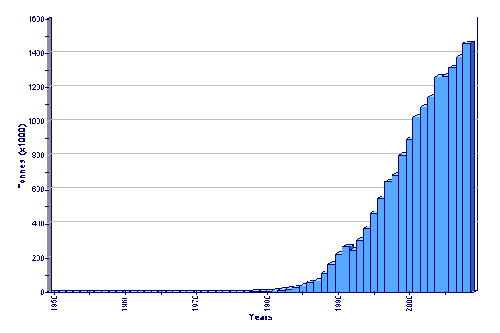
(FAO Fishery Statistic)
Market and trade
See status and trends below.
Status and trends
The following status and trends exist:
- Current worldwide production of farmed Atlantic salmon exceeds 1 000 000 tonnes.
- Farmed Atlantic salmon constitute >90 per cent of the farmed salmon market, and >50 per cent of the total global salmon market.
- The major markets for farmed Atlantic salmon are Japan, the European Union, and North America.
- The major products remain fresh (whole, steaked, filleted), frozen, and smoked (mainly for the European market). A small but increasing per centage is on-processed to supply value-added products into the market.
- Because of rapid increases in production over the last 10-15 years, ex-farm prices have fallen sharply. This, and the decreasing availability of suitable sites have limited further growth in production in the Northern hemisphere. The most rapidly growing supplier now is Chile, which has low labour and materials costs and can therefore effectively compete with traditional producing countries in distant markets.
- Many producers in Europe are unable to sell fish into the market at the cost of production. There has been an increase in the development of quality schemes, both industry and interest-group led (e.g. organic/welfare-related schemes), in order to try and protect market prices. Political intervention (e.g. minimum import prices for Atlantic salmon imported into the EU from non-EU countries) has failed to maintain market prices in some markets.
- Much of the state-of-the-art research into salmonid farming still takes place in traditional Northern European producing countries, and much of this focuses on developing economies of scale in order to reduce unit production costs and protect profit margins. However, it seems likely that significant future production increases will take place in Chile, where costs of production are generally lower due to lower cost of labour and raw materials.
- For up-to-date salmon market prices, see Globefish or local market organisations.
Main Issues
Atlantic salmon farming has long been controversial and its effect on the environment and on wild fisheries (particularly salmonid fisheries) is questioned by many individuals and organizations.
The major areas of concern are detailed in World Wildlife Fund reports:
- Local nutrient pollution into water systems, by waste feed/faeces.
- Local chemical pollution, by use of chemical treatments.
- Effect on wild fish, by escapees, through disease spread.
- Global environmental impact and issues of sustainability, since salmon production relies on supplies of fishmeal and fish oil for feed production, from industrial fisheries.
Concerns have also been expressed relating to welfare of the farmed fish. See Compassion in World Farming and Farm Animal Welfare Council reports for examples.
Responsible aquaculture practices
Various quality schemes now exist which are variously designed to improve the quality, safety, welfare, and environmental sustainability of farmed Atlantic salmon. These include:
- Industry-led schemes, e.g. Scottish Quality Salmon.
- iler-led schemes, e.g. UK supermarket quality schemes; the Label Rouge government-led scheme in France (www.agriculture.gouv.fr).
- Niche market schemes (e.g. Organic salmon schemes, welfare schemes such as Freedom Foods).
Most producing countries are governed by regulations that aim to protect the environment, the fish, and the consumer. For specific details contact the relevant Government authority.
References
Bibliography
Brown, L. 1993. Aquaculture for Veterinarians. Pergamon Press, New York, USA. 462 pp.
Bruno, D.W. & Poppe, T.T. 1996. A Colour Atlas of Salmonid Diseases. Academic Press Ltd, London, England. 194 pp.
Purser, J. & Forteath, N. 2003. Salmonids. In J.S. Lucas & P.C. Southgate (eds.), Aquaculture: Farming Aquatic Animals and Plants, pp. 295-320. Blackwell Publishing, Oxford, England.
Roberts R.J. & Shepherd C.J. 1997. Handbook of Trout & Salmon Diseases, 3rd Edition. Blackwell Science, Oxford, England. 179 pp.
Willoughby, S. 1999. Manual of Salmonid Farming. Blackwell Science, Oxford, England. 359 pp.
October 2010

